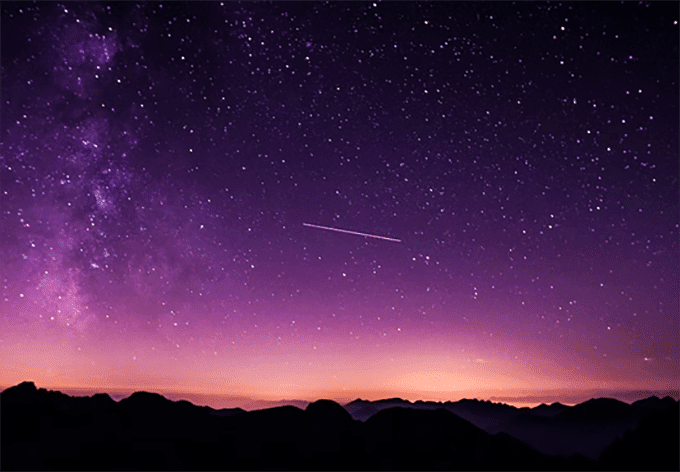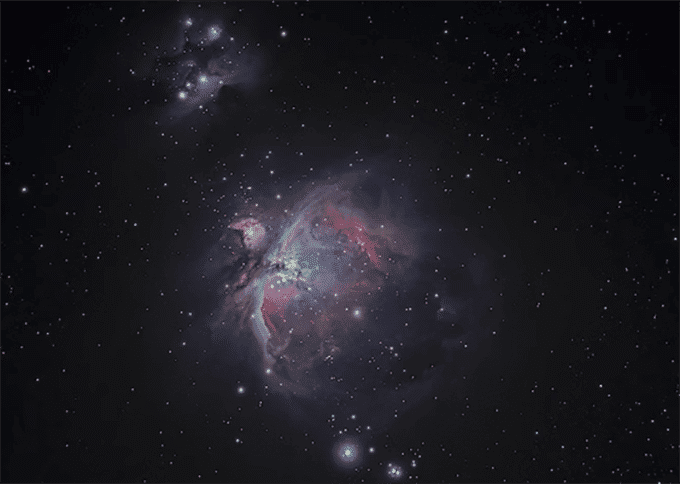words Al Woods
2022 has seen some pretty exciting things happen. From exciting scientific discoveries to eclipses and supermoons. It truly has been a year for astronomers, stargazers, and space enthusiasts alike. Let’s take a look at a few of the latest astronomy stories as well as a few celestial moments you can look forward to as the year comes to an end.

1. Most Detailed Portrait of the “Pillars of Creation” Ever
NASA’s James Webb Space Telescope has captured a highly detailed landscape of the Pillars of Creation, where we can observe the formation of new stars in dense clouds of gas and dust. If you haven’t seen it before, do yourself a favor and google it. The pillars are made up of interstellar gas that appears partially transparent in the near-infrared light of the telescope, mimicking a majestic rock formation, but are far more permeable. This image was initially made famous by the Hubble Space Telescope in 1995, but Satellite and Space technology has come leaps and bounds since then. The newer clearer imaging and data will help researchers better understand how stars form from these dusty clouds over the passage of time. The newly observed stars are estimated to be only a few hundred thousand years old, which is incredibly exciting. The James Webb Space Telescope is helping scientists understand and solve the mysteries of our solar system as well as those in the distant stars beyond.
2. The Role of Supermassive Black Holes on Star Formation Of Galaxies
Galaxies are typically divided into two classes – spirals and ellipticals. Spirals have blue spirals with an abundance of cold gas, with star formation happening at more regular intervals, while elliptical galaxies appear yellow, don’t have distinct features and star formation is scarce. In fact, the elliptical galaxies being observed by scientists appear to have not had any new star formation in billions of years. New evidence suggests that supermassive black holes could be responsible for depleting the fuel that certain galaxies require for star formation. Thanks to this discovery. Astronomers are closer to understanding the impact supermassive black holes have on elliptical galaxies.
3. Laughing Into Life
As we well know, certain chemical compounds need to be present in a planet’s atmosphere for life to be able to thrive. We typically look for gases found in abundance in Earth’s atmosphere today, the most popular being the presence of oxygen and methane. But scientists are now considering the possibility of using nitrous oxide, more commonly known as “laughing gas”, as a biosignature. A team of researchers determined that nitrous oxide could potentially be an indicator of life in the same way that CO2 or methane is. Living beings create nitrous oxide in a few ways, the most common being through the metabolic process of converting nitrogen into cellular energy. The presence of nitrous oxide is not a guarantee of life, however, it is a rather uncommon gas, so scientists believe that it stands to reason that planets, where it is present, might also have life.
4. Mysterious Ripples in the Milky Way
You might have heard about the mysterious ripples in the Milky Way that a group of scientists discovered using data from the Gaia space telescope. The ripples were caused by a dwarf galaxy that passed by our galaxy a few hundred million years ago and is now visible in the constellation of Sagittarius. When the dwarf galaxy of Sagittarius passed by, it made the stars on the outer disk of our galaxy “wobble” and moved things up and down at different speeds due to its gravitational pull.
5. Early Warning Signs Stars Are About to Go Supernova
Astronomers have devised an early warning system that alerts them when a star is about to go supernova. In the past, it was known that stars would dim before going supernova, but now researchers have simulated what it looks like when they are embedded within what they called “pre-explosion cocoons” and about to blow. The cocoon is assembled in less than a year and it completely obscures the star, which causes the dimming. Researchers have found that the day before it explodes, the star is no longer visible, appearing as if it wasn’t ever there, and this is the time to start your observation. This guarantees the observation of the supernova in real-time rather than after the fact.
6. A Black Hole Spits Something Out
As far as we know, black holes are these voids that consume and nothing can escape them. However, astronomers observed, completely accidentally, a black hole that had ripped a system to shreds just a few years prior, and to their surprise lit up again although it hadn’t swallowed anything new. Nothing like this has ever been observed and recorded before and the team concluded that it was the black hole ejecting star material traveling at 50 percent the speed of light. The scientists likened this behavior to a burp, but could not say why it was delayed by several years. It is an event that needs further study and scientists are hoping to find out how regularly this happens.
7. Event Coming Up: The Geminid Meteor Shower
If you are someone who enjoys a good meteor shower keep your eyes open around the 14th of December. The annual Geminids meteor shower with up to 120 meteors per hour, is one of the most spectacular meteor shower displays you can see. The best time to view it is in the early hours of the morning, or a few hours after sunset. Go to your backyard, or find a roof and enjoy the view.
8. Event Coming Up: Partial Solar Eclipse
If you missed it in April, don’t worry, you’ll be able to catch a glimpse of the partial solar eclipse on the 25th of October. At about 10:08 am GMT, the Moon will start its journey between the Sun and the Earth, partially obscuring its light, reaching its peak at around 11 am GMT. We won’t be shrouded in shadows as the sun will only be partially obscured by about 25%, so you’ll perhaps want to save your eclipse glasses for a later date if you have some waiting for the next eclipse. It’s still pretty cool though.

As 2022 comes to an end there have been some interesting discoveries laying the base for more to come. There are also a few cool celestial events set to occur, so grab your telescope and enjoy what the sky has to offer.









